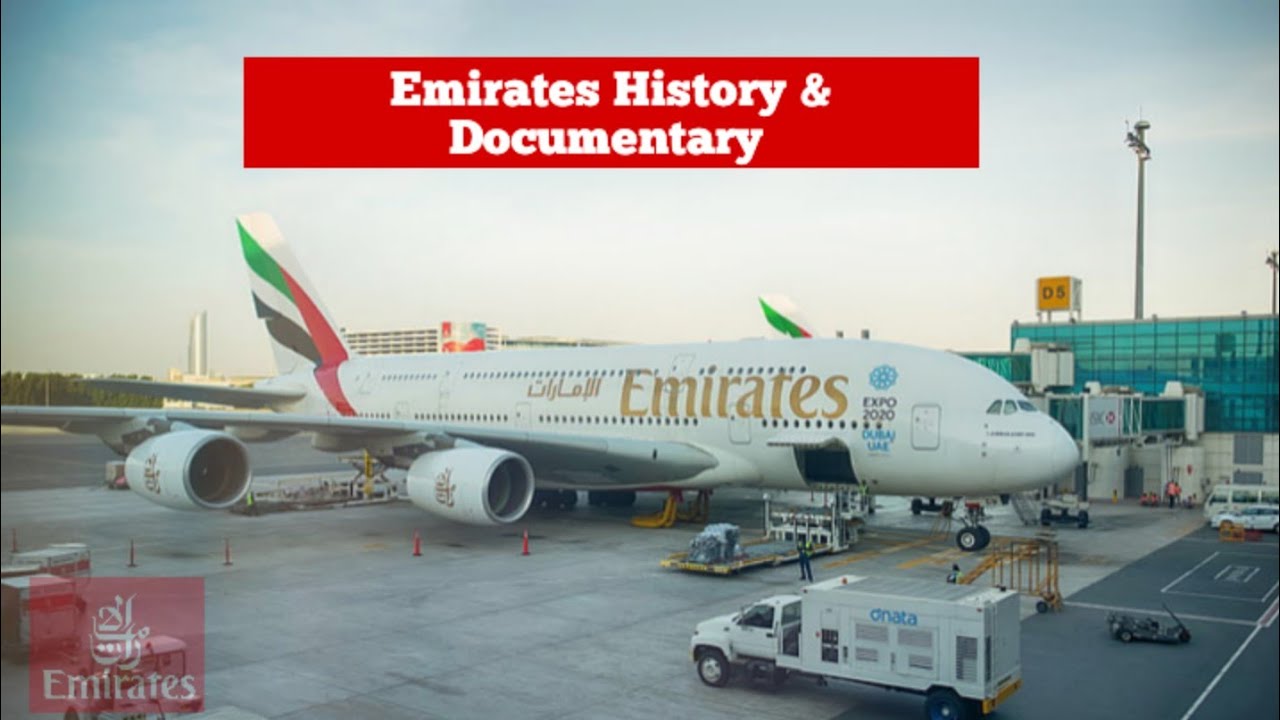The History of Emirates - Dubai's Global Airline (Asia's Airlines)
Summary
TLDREmirates Airlines, founded in the 1980s, has rapidly transformed Dubai into a global air travel hub. Starting with two leased aircraft, it now operates a fleet of 260, including the world's largest Airbus A380s and Boeing 777s. With a diverse workforce and premium in-flight services like private suites and showers, Emirates connects over 34 destinations in 76 countries, carrying 43.6 million passengers and 1.8 million tons of cargo in 2023. It continues to innovate and expand, setting a standard for other Middle Eastern carriers.
Takeaways
- 🌆 Dubai International Airport is known for its busy nights and early mornings, serving as a global air travel hub.
- ✈️ Emirates, a Dubai-based airline, has played a significant role in transforming Dubai into a major global connecting hub.
- 📈 Emirates started with a small fleet and has rapidly grown to become a global airline with a wide network of destinations.
- 🛫 The airline's first flights were to Karachi and Mumbai in 1985, and it has since expanded to over 140 destinations.
- 🚀 Key to Emirates' growth was its investment in modern aircraft like the Airbus A380 and Boeing 777, which are central to its operations.
- 🌐 Emirates has been a pioneer in in-flight amenities, offering features like private suites, in-flight bars, and shower facilities.
- 🌟 The airline's success has contributed to Dubai becoming the world's busiest airport for international passenger traffic.
- 📊 Despite the COVID-19 pandemic, Emirates continued to operate and played a significant role in air freight services.
- 🌍 As of December 2023, Emirates operates a fleet of 260 widebody aircraft, including 116 Airbus A380s and 143 Boeing 777s.
- 🔮 Looking forward, Emirates has orders for over 300 new aircraft, including the Boeing 787, Airbus A350, and the new Boeing 777X, indicating continued expansion.
Q & A
What is the significance of Dubai International Airport for Emirates?
-Dubai International Airport is significant for Emirates as it serves as the airline's main hub, allowing it to connect passengers to numerous destinations worldwide, contributing to Dubai's status as a major global connecting hub.
When did Emirates launch its first flights?
-Emirates launched its first flights on October 25th, 1985, from Dubai to Karachi, Pakistan, and Mumbai, India.
What was the initial fleet of Emirates like?
-Emirates initially operated with two wet-leased aircraft: a Boeing 737 and an Airbus A300B4, obtained with assistance from Pakistan International Airlines.
How did Emirates expand its network in its early years?
-In its early years, Emirates expanded its network to the Middle East, North Africa, and South Asia, and by its fifth year, it operated flights to 14 destinations, including its first European destination, Frankfurt.
What major investment did Emirates make in the 1990s?
-In the 1990s, Emirates made a major investment by ordering seven Boeing 777s in 1992, which became a primary workhorse for the airline.
What was the impact of the Airbus A380 on Emirates?
-The Airbus A380 had a significant impact on Emirates as it became the airline's flagship aircraft, allowing it to offer premium in-flight experiences and expand its long-haul operations.
How did Emirates contribute to Dubai's growth as a global city?
-Emirates contributed to Dubai's growth by transforming it into the busiest international air travel hub, connecting passengers to almost anywhere in the world and increasing its international passenger traffic.
What was Emirates' strategy during the COVID-19 pandemic?
-During the COVID-19 pandemic, Emirates played a prominent role in air freight services to support the delivery of essential goods and continued to serve international transit travel, being one of the few airlines that operated during the peak of the pandemic.
What is the current size of Emirates' fleet?
-As of December 2023, Emirates operates a fleet of 260 widebody aircraft, including the largest number of Airbus A380 super jumbos and Boeing 777s.
How does Emirates differentiate itself with its in-flight products?
-Emirates differentiates itself with its in-flight products by offering premium experiences such as private first-class suites, in-flight bars, and showers, setting it apart from other global airlines.
What is the role of Emirates in the aviation industry's shift towards point-to-point travel?
-Despite the industry's shift towards point-to-point travel, Emirates continues to operate successfully from its hub in Dubai, maintaining its model of offering connecting travel to different cities worldwide.
Outlines

Esta sección está disponible solo para usuarios con suscripción. Por favor, mejora tu plan para acceder a esta parte.
Mejorar ahoraMindmap

Esta sección está disponible solo para usuarios con suscripción. Por favor, mejora tu plan para acceder a esta parte.
Mejorar ahoraKeywords

Esta sección está disponible solo para usuarios con suscripción. Por favor, mejora tu plan para acceder a esta parte.
Mejorar ahoraHighlights

Esta sección está disponible solo para usuarios con suscripción. Por favor, mejora tu plan para acceder a esta parte.
Mejorar ahoraTranscripts

Esta sección está disponible solo para usuarios con suscripción. Por favor, mejora tu plan para acceder a esta parte.
Mejorar ahoraVer Más Videos Relacionados

The Rise Of Emirates: A PIA Investment To Global Mega Airline

How Emirates Airlines Became Successful | History Of Emirates Airlines

Emirates Airlines History & Documentary - A Short Journey Of Excellence

The End is Nigh for Qatar and Emirates

Singapore Airlines' HUGE Plans For Their A380 SHOCKS The Entire Aviation Industry!

ドバイはなぜ砂漠の地から豊かになったのか?【ゆっくり解説】
5.0 / 5 (0 votes)
